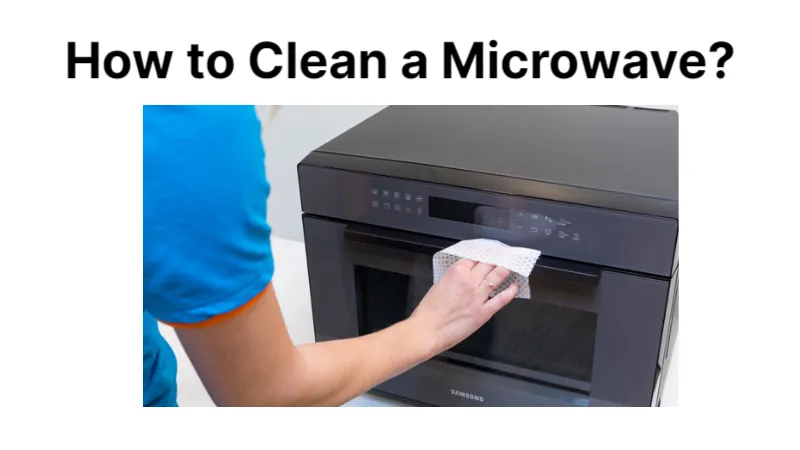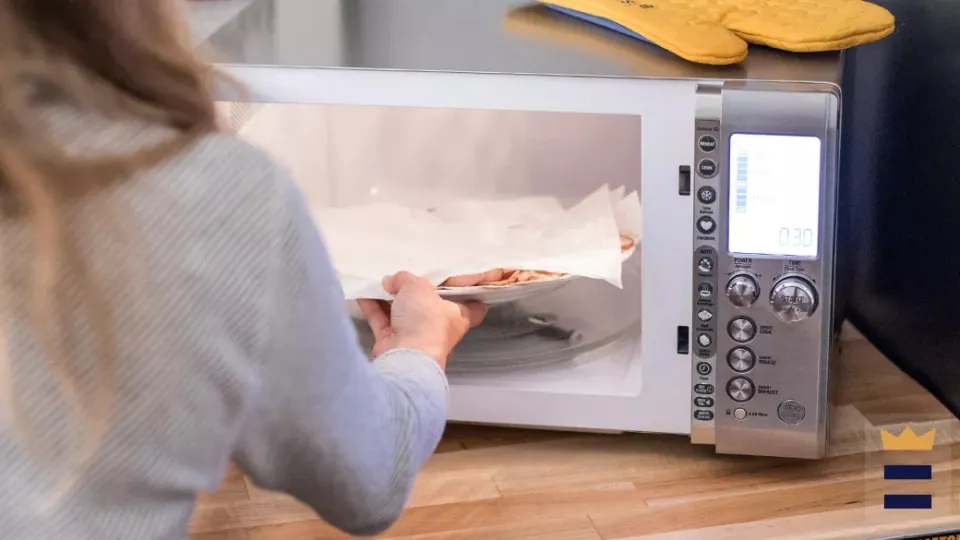You may have heard about air fryers and marveled at manufacturers’ claims that they produce crispy foods with less fat than deep-frying and faster than a conventional oven. Can something like that happen? To determine whether these fashionable appliances are worthwhile investing in, we examine “how does an air fryer work”.
By using a combination of radiation and convection to cook your food. While a fan quickly moves the heated air all around it, a heating element near the top of the fryer radiates heat into the air in the cooking chamber. The result is a cooking technique that is more akin to frying than baking because of the combination’s extremely intense heat transfer.
Continue reading to learn more particulars.
What is An Air Fryer?
The name of what is arguably the hottest home cooking appliance right now is an air fryer. Furthermore, it’s somewhat misleading because, strictly speaking, it’s not a fryer. Actually, it’s more of a high-intensity convection oven.
But whereas a convection oven is typically big, takes a long time to heat up and needs to be installed in some sort of kitchen unit, an air fryer is small, takes next to no time to heat up and sits on your countertop.
![How Does An Air Fryer Work? the Ultimate Guide [2023]](https://www.myprimehome.com/wp-content/uploads/2023/03/10-biggest-pros-and-cons-of-using-an-air-fryer-iproperty.com_.my_.webp)
How Do Air Fryers Work?
A heating system and fan are located in the top portion of an air fryer. When you turn on the fryer, hot air rushes down and around the food that is placed in the basket. This quick circulation gives the food a crisp texture, simulating deep-frying without the use of oil. Bonus: This air fryer cheat sheet will help you master air fryer cooking ASAP.
Here’s how to use an air fryer:
Place Your Food in the Basket
The basket’s capacity can range from 2 to 10 quarts, depending on the size of your air fryer. In most cases, you’ll want to add 1 or 2 teaspoons of oil to help the food get nice and crispy. You can use foil in an air fryer to speed up cleanup if you’re in a rush.
Set the Time and Temperature
Depending on the food you’re cooking, air fryer cooking times and temperatures typically range from 5 to 25 minutes at 350° to 400°F.
Let the Food Cook
To ensure that the food crisps up evenly, you might need to flip or turn it halfway through cooking. Once you’re done cooking, it’s important to clean your air fryer.
Want to know the trick to air-fried food that is golden-brown and crispy? We’ve got air fryer tricks that’ll make every recipe turn out perfectly, as well as air fryer blunders you’ll want to stay clear of. This air fryer grill pan, which turns an air fryer into an indoor barbecue, is a favorite among home cooks as well.
![How Does An Air Fryer Work? the Ultimate Guide [2023]](https://www.myprimehome.com/wp-content/uploads/2023/03/How-Do-Air-Fryers-Work.webp)
What Can You Cook in An Air Fryer?
Foods dipped in liquid batter, like onion rings or fried chicken, cannot be prepared in an air fryer, which is a disadvantage. You cannot cook doughy foods like doughnuts or beignets because the batter will simply drip through the holes in the basket and make a big mess. You are thus limited to items that are breaded or dry-seasoned.
You’re also limited in terms of portion sizes, but we’ll get into that a bit later. We’ll talk about one specific task that air fryers excel at near the end of this article. But first, let’s examine the purported health benefits of air fryers.
Are Air Fryers More Healthy?
Given that an air fryer uses less oil than a deep fryer does, one of the main benefits of using one is that the food produced is healthier.
So let’s look at that. For starters, we know that all cooking oils are pretty healthy. There is nothing particularly unhealthy about the oil used in a deep-fryer as long as you aren’t frying your food in vegetable shortening or lard.
Of course, oil contains calories, and while calories in and of themselves are not harmful, using less oil might be a good idea if you’re trying to reduce your calorie intake. Right?
Well, that depends. When cooked at the proper temperature (between 350 and 375 F), deep-fried foods actually absorb very little oil. In fact, depending on the type of oil used and whether or not the fries had a seasoned coating, a comparative study discovered that french fries cooked in oil had between 14 and 40 more calories per 4-ounce serving than baked fries.1 An approximate half-banana has 40 calories, for comparison.
To put it another way, deep-frying has very few extra calories. Whatever method of cooking is used, French fries are always high in calories.
Furthermore, the air fryer’s instructions state that the uncooked fries should be tossed in 1 to 1 1/2 tablespoons of oil before cooking. That extra oil adds between 120 and 180 calories. The amount of oil on your air fryer french fries is identical to the amount of oil on your traditional deep-fried french fries, even when divided into two servings, which is a typical batch size for an air fryer.
In any case, regardless of how they are prepared, no one can credibly assert that french fries are a healthy food. Therefore, promoting the health advantages of a device made to cook tater tots or chicken wings might not be all that meaningful.
![How Does An Air Fryer Work? the Ultimate Guide [2023]](https://www.myprimehome.com/wp-content/uploads/2023/03/How-do-air-fryers-work-The-science-of-everyones-favourite-kitchen-gadget-BBC-Science-Focus-Magazine.webp)
Are Air Fryers Convenient?
So, let’s look at the convenience. The capacity of air fryers is one issue. There must be enough room between the individual items for the hot air to circulate evenly around them because they operate on the convection principle. As a result, you won’t be able to completely fill the basket and still get nicely browned food. Thus, cooking must be done in small batches.
That’s not necessarily a problem, unless you need to feed more than two people at a time. Additionally, depending on the food, cooking time per batch can be close to 30 minutes (with frequent basket shaking to ensure even cooking), so hopefully those two aren’t overly peckish (or at least have something else to munch on while they wait).
Reheating previously fried foods is a task that air fryers appear to be well suited for. Unlike the oven or the microwave, which will turn crispy things soggy, the hot, convection effect of an air fryer is just the thing to reheat crispy foods so that they stay crispy. Do you think that justifies purchasing one? It’s up to you, but even if its actual cooking abilities don’t wow you, it’s comforting to know that an air fryer excels at at least one thing.
How to Clean An Air Fryer?
For information on how to maintain your air fryer and how to keep it clean and functioning properly, just like with any home appliance, we advise that you refer to the owner’s manual. Generally speaking, we advise cleaning your air fryer after each use to avoid a buildup of grease, food debris, and odors produced during the cooking process. For more frequent use, it is advised to perform periodic deep cleaning. Cleaning up is simpler with models that have parts with dishwasher-safe, long-lasting nonstick coatings.
Unplug the device and allow it to completely cool before attempting to clean it. Care must be taken to avoid scratching or other finish damage when removing food residue or grease that has caked on. Prior to use, make sure your air fryer, baskets, racks, and other accessories are thoroughly rinsed and dried. As with any electrical appliance, never immerse the device in water, and abide by all manufacturer instructions to avoid voiding the warranty.
![How Does An Air Fryer Work? the Ultimate Guide [2023]](https://www.myprimehome.com/wp-content/uploads/2023/03/Air-Fryer-Guide-Argos.webp)
FAQs
What Are the Pros and Cons of Air Fryers?
Pros: Frozen food preparation is made simple with air fryers, and it can be done in a way that is a little healthier than deep-frying. The results are much better than oven-frying, and your kitchen stays cool.
Cons: You’ll probably need to cook in batches, especially if you’re cooking for a large group of people because even the biggest air fryers have a limited capacity. Bigger than a toaster, air fryers also take up valuable counter space. In conclusion, depending on the model you choose, they may be expensive.
Do You Need Oil to Cook in An Air Fryer?
Many foods can be air-fried without any oil at all, but occasionally you may want to add a little to make the food more crisp. Even if you use a small amount of oil, it won’t compare to the health risks associated with deep-frying.
Does An Air Fryer Improve Tastes?
The Maillard reaction begins sooner in an air fryer than it does in a conventional oven, though that ultimately depends on what you’re cooking due to the intensity of the heat transfer caused by the rapid airflow. So with a little practice, you can hasten the browning and flavorful crusting of your foods’ exteriors while ensuring their moist, succulent interiors.
How is It Different to Cooking Food in a Convection Oven?
First of all, heating an air fryer is simpler, quicker, and less expensive because the cooking chamber is much smaller than that of a convection oven.
But the main distinction is that food cooked in an air fryer is placed in a basket with unique channels and vents in its bottom and sides. By quickly circulating heated air underneath, across, and over your food, these channels and vents create the impression that it is being immersed in hot oil.
While convection ovens also use fans to blow hot air over the food they are cooking, because of their larger cooking chambers, the air doesn’t circulate as quickly and doesn’t heat the food as quickly.
Summary: is It Worth Getting An Air Fryer?
An air fryer’s heating system and fan are located in the top section. When you turn on the fryer-style basket with the food inside it, hot air rushes down and around the food. This quick circulation gives the food a crispiness similar to deep-frying but without the oil.
With so many models available, the cost of this well-liked appliance has decreased over the past few years; many models are now under $200, and some are even under $100. Investing in an air fryer is worthwhile if you frequently prepare fried foods—either from scratch or from frozen—reheat leftovers frequently, or enjoy experimenting with new kitchen gadgets.
If you have any questions, please leave a comment. My Prime Home tries to give you the best home improvement information. Don’t forget to share the post. Thank you for reading.
You may also interested:
![How Does An Air Fryer Work? the Ultimate Guide [2023]](https://www.myprimehome.com/wp-content/uploads/2023/03/How-Does-An-Air-Fryer-Work-the-Ultimate-Guide-2023.webp)


